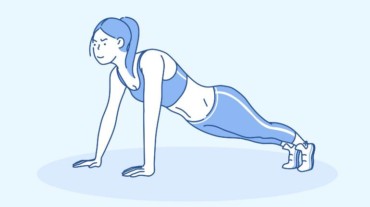Body-weight exercises vs weight lifting: Which is better for you? Let’s find out

- 54
It’s funny how life makes us girls go through the ordeal of making tough choices every now and then. A classic LBD or neon coordinates? Peep toes or boots? Bold red lips or subtle nude ones? Sorbet or a hot chocolate fudge? And finally, body weight training or lifting free weights? While you can still let the heart decide in the former cases, when it comes to weight training–you have to think your choices through.
I am talking about having to pick the right type of workout for yourself.
Let’s just understand the options first
How can you possibly choose between a sorbet and a fudge when you don’t know how they taste in the first place? Similarly, we don’t expect you to make a monumental fitness decision without actually knowing your options well.
To begin with, both body-weight training and free-weight lifting happen to be two sides of the same coin–namely, resistance training, also known as strength training. Strength training improves muscular strength by gradually increasing your ability to resist force. This of course happens with the help of free weights, machines, and the person’s own body weight.
But what’s the difference between these two types of resistance training?
Body-weight training: “It involves using your own body weight as resistance to perform exercises,” says Praveshh Gaur, founder and director of Srauta Wellness.
“Exercises like squats, push-ups, chin-ups, burpees, planks, TRX training, and stair climbing involve using your body weight against gravity and are great examples of body-weight training,” he adds.
Free-weight lifting: On the other hand, fitness expert Juily Wagle, who is also the founder of MetaboliX, a diet and fitness consulting firm, defines free-weight lifting as “strength training done with the use of external weights like dumb-bells, kettlebells, or machines.”

Basically, both have their own set of advantages and setbacks. But you can choose the one for you based on your personal fitness goal.
The case for body-weight training
Who should do it?
“Body-weight training can be performed by anybody, no matter what their fitness level is,” says Gaur. This makes body-weight training a great idea for beginners and people getting back to their workouts after a long gap.
“For a person with a lean body, it may be hard to lift heavy weights. So starting with lifting their own weight can help,” he explains.
In fact, it can even be advantageous for people with tight schedules as he points out that it requires minimal setup and little rest time between each set.
“It is also best suited for people who are intimidated by gyms and are shy to work out in front of people,” he adds.
What are the advantages?
“This form of exercise can build strength, balance, flexibility, core stability, and can help you lose fat,” Gaur exclaims.
“It also builds muscle, makes you burn calories, and improves your aerobic capacity. And these exercises keep your bones and joints healthy, boost lean muscle mass, and increase athletic performance,” he adds.
Gaur is also quick to mention that it is simple and does not involve any heavy gym equipment, making it a very flexible form of workout, which can be performed anywhere, any time.

Another important point brought to light by Wagle is the fact that body-weight training has a lesser risk of injury and mishaps compared to free-weight lifting–and this can particularly work well for beginners.
Not to mention, this fitness routine is also quite pocket-friendly as you don’t need to buy any expensive equipment or pay hefty amounts for gym memberships.
The case for lifting free weights
Who should do it?
If you’re looking to tone up your body or simply build muscle, this may be the workout for you. Additionally, if you’ve hit a fitness plateau and have stopped losing weight, increasing the weight on the bar can break this plateau and give you the desired results.
What are the advantages?
After a point, your body may adapt to lifting its own weight and the problem is that since you can’t really increase your own weight (that’s not what you want, right?), the results will stagnate. However, in case, of free-weight training, you can always vary the weight you’re lifting and thus, the body doesn’t adapt and shows results, according to Gaur.
Moreover, unlike body-weight training, it has more variations and can be more target-specific. For instance, it is possible to focus on a single muscle via exercises like the dumb-bell curl–which isn’t exactly the case with body-weight training.
The final word?
“Although both the routines have their own benefits, personally I believe that a body-weight training regime, one to hour hours a day is sufficient to keep your fitness on track and lead a healthy life,” says Gaur.
However, Wagle is quick to remind us of the precautions to be taken during these workouts. This is what she suggests:
- Before starting or ending any exercise, make sure to warm-up and cool down properly.
![best time to workout]()
Don’t ignore warm-ups and cool-downs. GIF courtesy: Giphy - Start the routine slowly and to boost your activity level, always listen to your body. Never push or be too hard on yourself or you may end up injured.
- Make sure you learn the technique of performing the exercise from a qualified fitness professional.
- Check for joint misalignment or injuries before performing body-weight training.
- Rotate your exercises weekly so that the same body part is not stressed continuously.
- Breathe correctly during exercise to avoid injury and enable progress.
Get latest updates on health and wellness along with Fitness, Muscle Gain, Staying Fit, Weight Loss











